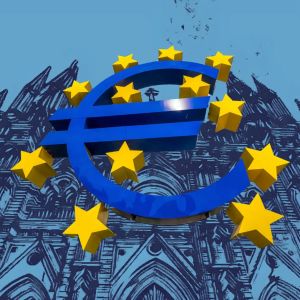Stablecoin Regulation Still Faces Key Unresolved Questions, Says IMF
3 min read
Key Takeaways: IMF’s Bo Li said regulatory uncertainty around stablecoins persists, especially regarding classification and enforcement. Global financial bodies are working to align frameworks but remain in early stages. Policy inconsistencies may drive firms toward jurisdictions with less oversight. The International Monetary Fund (IMF) continues to flag regulatory uncertainty around stablecoin , according to remarks by Deputy Managing Director Bo Li during the Summer Davos 2025 on June 25. Li stated that while stablecoins are gaining traction in global finance, two classification issues remain unsettled: whether stablecoins should be treated as currencies or financial assets, and, if considered currency, what tier of money they fall under, such as M0 or M2. Enforcement and Classification Remain Key Stablecoin Challenges “But this is merely the starting point. Many issues remain unresolved, and a stronger global consensus must still be forged,” he said. Li added that several jurisdictions, including the U.S., Europe, and multiple countries in Asia, are conducting policy experiments. However, he described the current stage as early and called for broader alignment across international regulatory bodies. The IMF is working with entities such as the Financial Stability Board and the Basel Committee to provide guidance. Li indicated that many member countries are proceeding cautiously, especially those using stablecoins to expand financial inclusion. Beyond classification, Li raised concerns about enforcement. Without unified standards, national rules may conflict, complicating compliance for global operators and increasing the risk of regulatory gaps. No timeline was given for when these frameworks might converge, but Li acknowledged ongoing dialogue between regulators, central banks, and financial institutions. The IMF’s unique structure for generating and deploying resources is like a credit union for countries—with a lending capacity of nearly $1 trillion. See our new blog for more. https://t.co/fCqU2dl95C pic.twitter.com/q4gju42EG0 — IMF (@IMFNews) June 25, 2025 Regulatory Gaps May Drive Firms to Looser Jurisdictions With the heightened global interest in central bank digital currencies and private-sector stablecoin projects, regulatory clarity may shape how these technologies are used in cross-border payments and domestic financial services. Li reiterated that technology will influence the structure of the global monetary system over time, though he cautioned against expecting rapid transitions. How stablecoins are ultimately classified could influence how central banks manage liquidity and design monetary policy. Treating them as part of the money supply would require new tools for tracking and controlling their effects on the broader economy. Private firms developing stablecoin infrastructure are also awaiting clearer rules. Without regulatory alignment, some may shift operations to jurisdictions with looser oversight, while others delay integration with traditional financial systems until legal boundaries are defined. Frequently Asked Questions (FAQs) Are decentralized stablecoins treated differently in regulatory discussions? Stablecoins issued by DAOs or without clear corporate backing often fall outside current legal frameworks, raising questions about accountability, reserves, and enforcement. Could inconsistent regulation lead to digital asset “regulatory arbitrage”? Companies may base operations in regions with lenient rules, creating uneven competition and potentially undermining more robust regulatory environments. Do tax authorities have a stablecoin policy? In many jurisdictions, tax treatment of stablecoin transactions, especially those used for daily payments, is still unsettled, complicating both individual compliance and institutional accounting. The post Stablecoin Regulation Still Faces Key Unresolved Questions, Says IMF appeared first on Cryptonews .

Source: cryptonews



